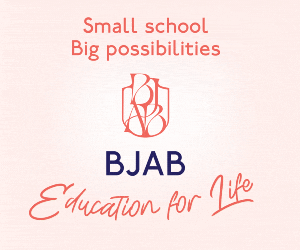The Belgian economy may be suffering, but financial writer Laura Cohn discovers that diamond sales are booming
For nearly 30 years, Miguel Sureda, president of DiamondLand, an unpretentious diamond shop in the heart of Antwerp’s high-security diamond quarter, marketed most of his individually-sold stones to western brides or wealthy septuagenarians who visited Belgium’s second city for a tasteful setting to commemorate landmark birthdays and anniversaries towards the end of their long lives.
“Chinese buyers sometimes quickly drop as much as 30,000 Euro for a good two carat stone”
No longer. Now, with Europe’s economy in the doldrums and the US faring only marginally better, the customers who come through his store are more likely to be 35-year-old Chinese buyers looking for large, high-quality stones. In fact, Sureda estimates more than half his private sales now go to customers from the Middle Kingdom.
“The mood is so different,” says Sureda, who has a Mandarin-speaking saleswoman on his shop floor. “The force that’s there is so tremendous.”
While the rest of Belgium’s economy may be struggling to pull out of a doubledip recession, the $57 billion diamond business in Antwerp, where 80 percent of the world’s rough diamonds and 50 percent of its polished diamonds are traded, is humming, thanks to Chinese clients.
NEW RICH
 In 2008, when the US economy stumbled after the demise of Lehman Brothers, demand surged for polished diamonds in Hong Kong, the key gateway to the Chinese market, and for the first time it actually surpassed the US, the long-time number one buyer. Overall, Hong Kong took in some 20 percent of Belgium’s diamond export that year. In 2010, that figure jumped to nearly 23 percent. Over the same period, mainland China became the seventh largest export market, up from the tenth largest. And the most recent figures show China and Hong Kong buy 25 percent of the diamonds that leave Antwerp each month.
In 2008, when the US economy stumbled after the demise of Lehman Brothers, demand surged for polished diamonds in Hong Kong, the key gateway to the Chinese market, and for the first time it actually surpassed the US, the long-time number one buyer. Overall, Hong Kong took in some 20 percent of Belgium’s diamond export that year. In 2010, that figure jumped to nearly 23 percent. Over the same period, mainland China became the seventh largest export market, up from the tenth largest. And the most recent figures show China and Hong Kong buy 25 percent of the diamonds that leave Antwerp each month.
Sitting in his office just off the showroom floor, Sureda chalks it up to pent-up demand of the new rich. “If you didn’t have something for two generations, you want it more,” he says. Chinese buyers sometimes quickly drop as much as €30,000 for a good two-carat stone, he adds. “I cannot see any Chinese client longer than ten minutes before he proposes buying something,” says Sureda, who speaks eight languages, plus enough Mandarin to “make the customer laugh”.
“Diamonds don’t provide dividends or interest, but they do tend to appreciate over time”
SURGE IN DEMAND
High-end diamond retailers want to join the party. New York-based Tiffany hopes to open three new stores in China in the coming months. Toronto-based Harry Winston, famous for adorning Hollywood celebrities with its baubles at the Oscar’s, also aims to open three new stores in China soon.
The surge in demand from China – as well as other emerging markets such as India and the Middle East – has pushed prices to the highest level for more than a generation. Last year, the benchmark Rapaport Diamond Index for one-carat round diamonds rose 17 percent, the biggest gain since 1986. So far this year, prices have come off their highs, though they remain close to last year’s levels.
The price gains have also been driven by the role of diamonds as a store of value. At a time when questions hang over the global economy – from the outcome of the euro crisis to the durability of the US recovery – investors want a safe, tangible place to put their money. “People, even in booming markets, know things can go south,” notes Marcel Pruwer, managing director of the Antwerp-based consulting firm International Economic Strategy, and a 30-year veteran of the business.
BUYER BEWARE
It is the same impetus that has driven up gold prices in recent months. But unlike gold, which is traded on markets from New York to London, investing in diamonds can be fraught. If you want to buy a diamond as an investment, take the time to find a reputable dealer, and only buy one with a certificate from GIA, IGI or HRD. Also, smaller diamonds can be hard to sell, making it a somewhat illiquid asset; for a private individual, selling a stone that’s three to five carats is easier than one that weighs a half-carat. Diamonds don’t provide dividends or interest, but they do tend to appreciate over time. According to Rapaport, $10,000 invested in 5-carat diamonds 10 years ago would now be worth $16,450. That’s better than what you would have earned putting the money in the NASDAQ or the Dow Jones Industrial Average.
“The thing about diamonds is, they don’t wear,” says Pruwer. “And it’s not something you’ll check on your Blackberry three times a day.”







